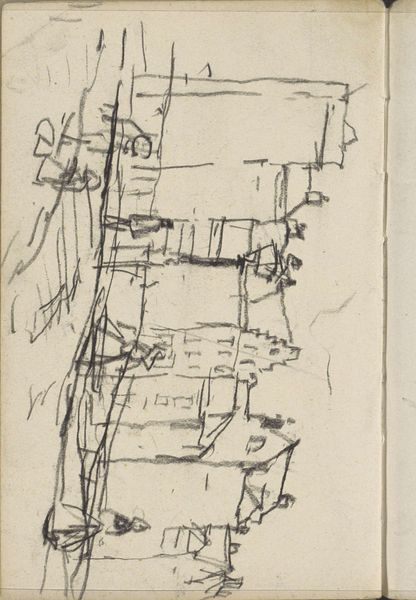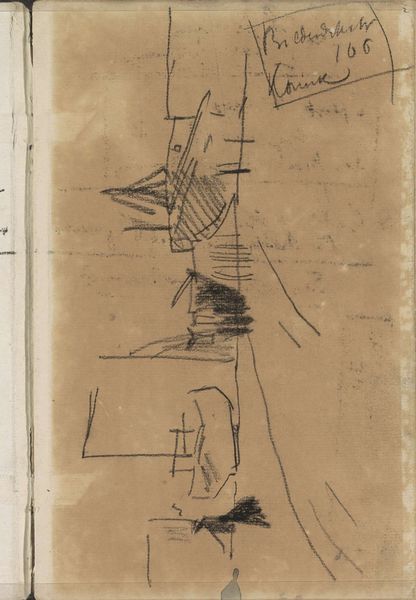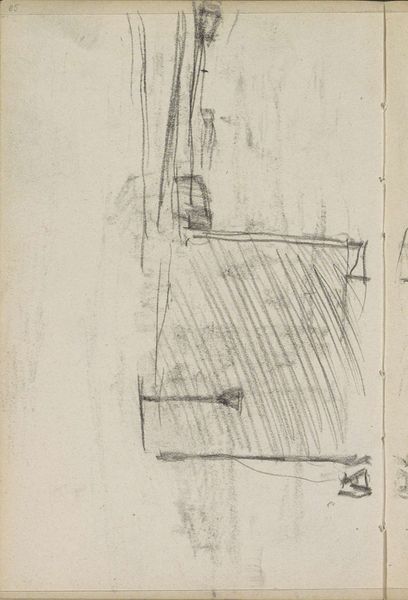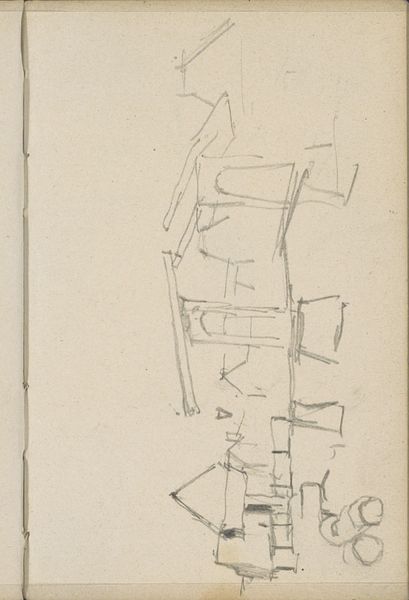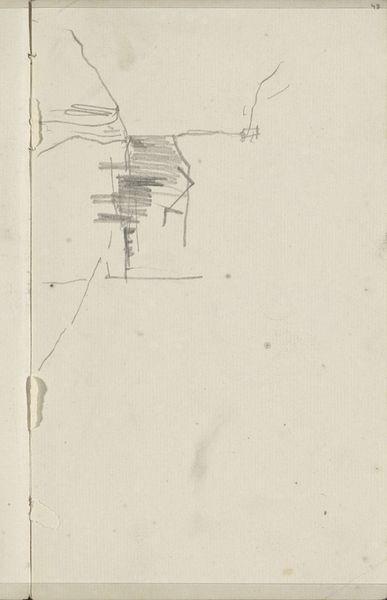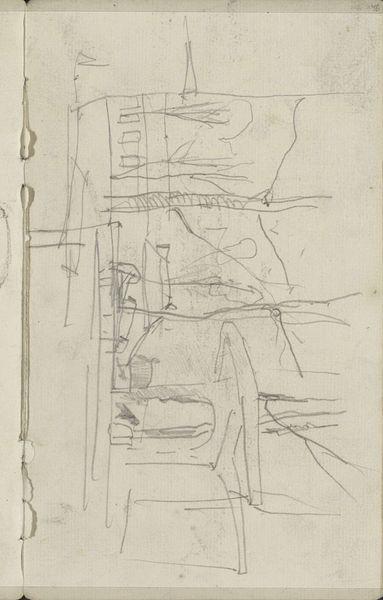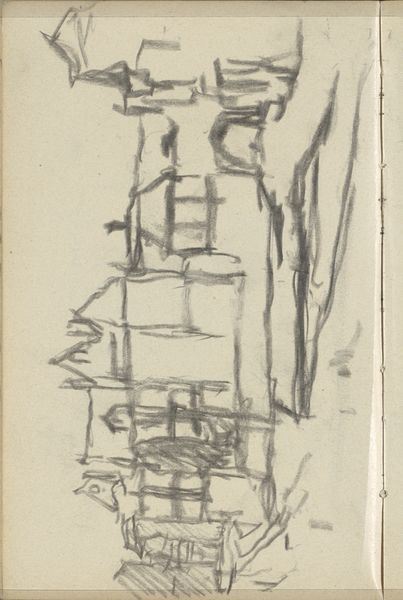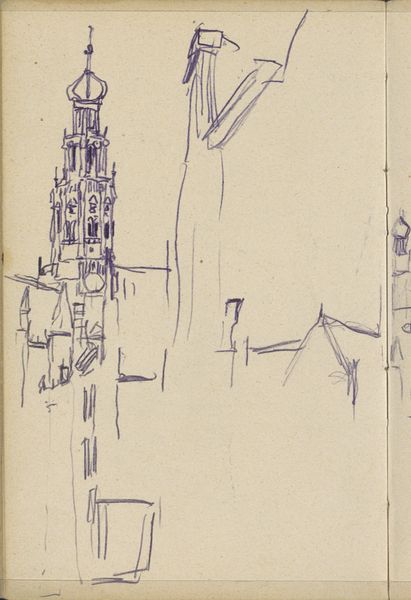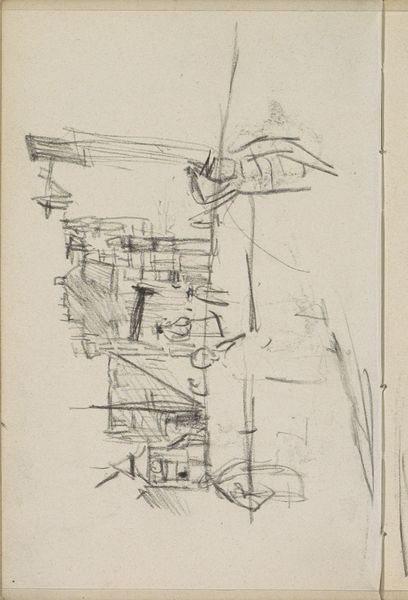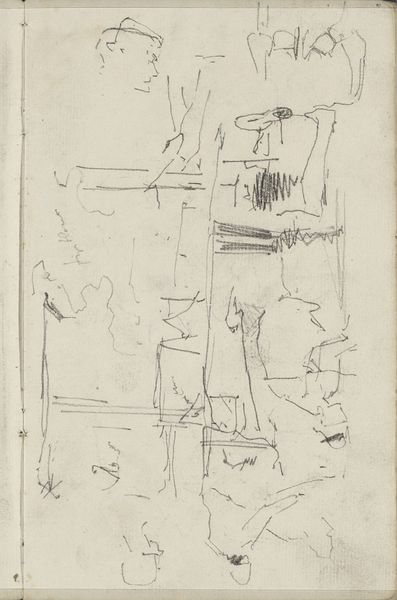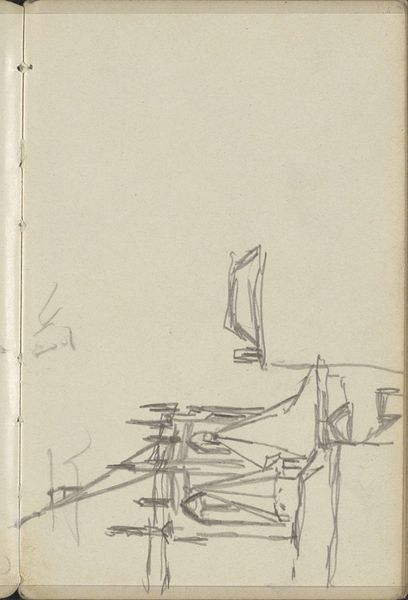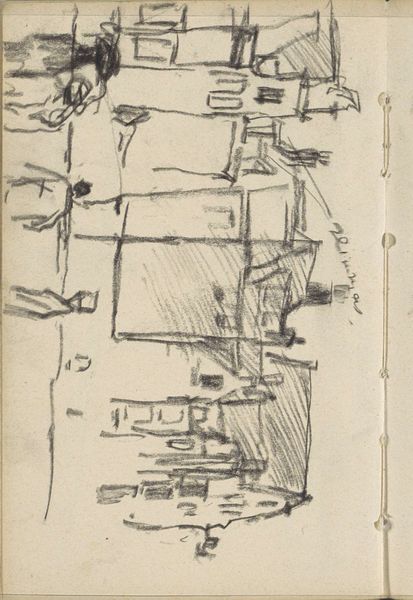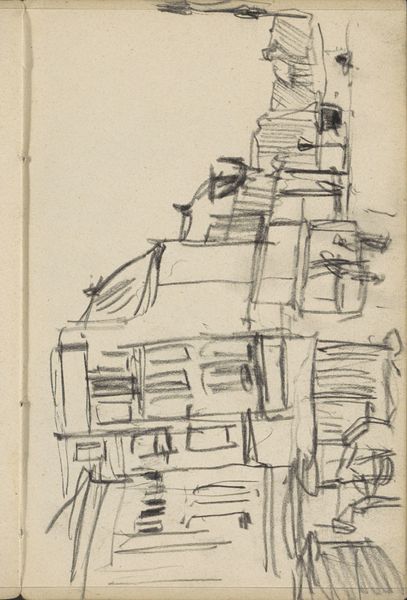
Copyright: Rijks Museum: Open Domain
Editor: This drawing, "Gezicht op het Damrak te Amsterdam" by George Hendrik Breitner, made between 1912 and 1919, seems to capture a very fleeting impression of the city. It’s a graphite sketch, isn’t it? The lines are so minimal. What's your interpretation of it? Curator: This sketch provides us with an immediate connection to Breitner's artistic process. Consider the labor involved in creating numerous sketches like this. He wasn't just depicting a cityscape, but documenting his interactions with it. Think about the sheer physicality of his process: the repetitive motion of applying graphite to paper. It’s about material engagement and a study of his surrounding urban experience. Editor: So, it’s less about the beauty of Amsterdam and more about Breitner’s act of observing and drawing it? Curator: Precisely. And consider what "Amsterdam" represented at that time -- it was rapidly modernizing and transforming. Breitner captured the reality of this period through a rather impressionistic lens, through his active and engaged process and not by celebrating some older idea of “picturesque Amsterdam”. How do these loose graphite markings serve as evidence of that active observation, that conscious record-making? Editor: I guess it shows how artists grapple with a changing world through their immediate engagement with their materials, showing us not just a picture, but a way of seeing. Thank you! Curator: Absolutely. Considering the artistic process highlights the dialogue between artist, material, and context; that offers us new ways of appreciating the artwork.
Comments
No comments
Be the first to comment and join the conversation on the ultimate creative platform.
